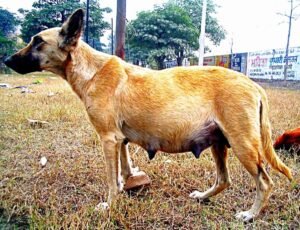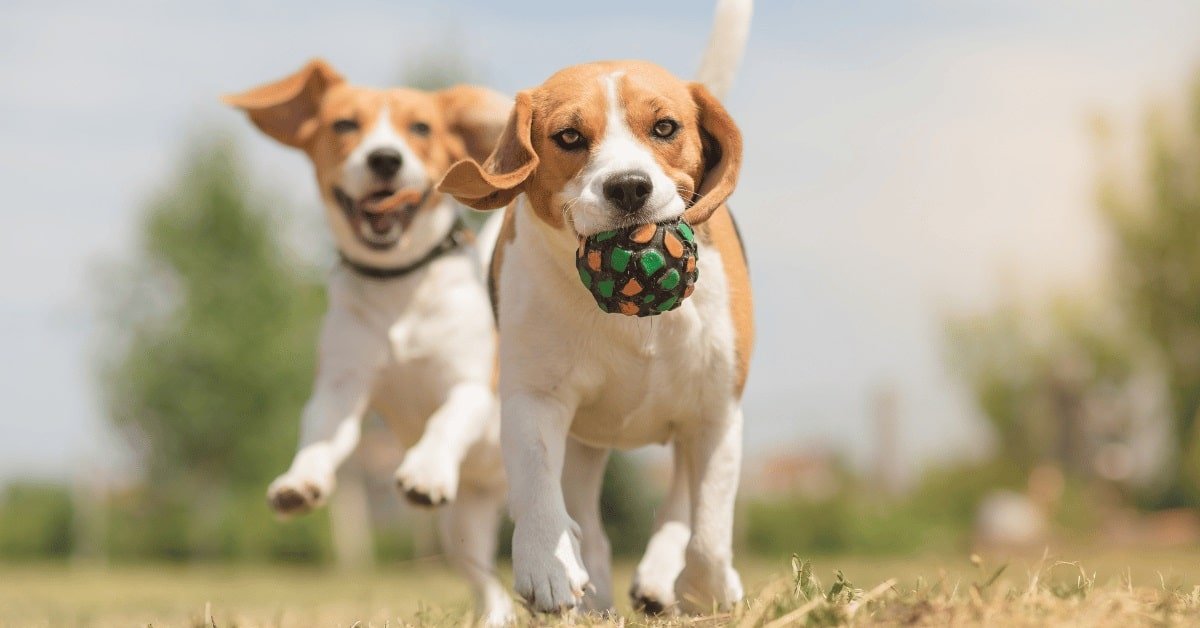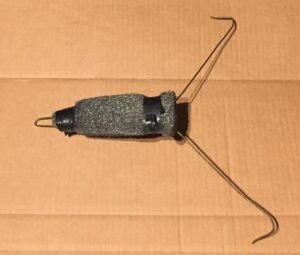Labor in dogs typically starts within 24 to 48 hours after the mucus plug is expelled. Close monitoring is essential for timely veterinary care. So let’s jump in deep: How Long After Mucus Plug Does Labor Start in Dogs?
Recognizing the signs of labor in dogs can help ensure a smooth birthing process. The mucus plug is a significant indicator that labor is imminent. This gelatinous substance blocks the cervical opening during pregnancy to protect the developing puppies from infections.
As labor approaches, the cervix dilates, causing the mucus plug to be expelled. This usually occurs within 24 to 48 hours before labor starts. Dog owners should be vigilant and prepared for the birthing process. Ensuring a comfortable and quiet environment for the mother dog can facilitate a safer delivery. Always consult a veterinarian for guidance and support.
Table of Contents
Signs Of Labor In Dogs
Understanding the signs of labor in dogs can help you prepare for the arrival of puppies. Recognizing these signs ensures that you can offer the best care for your pet. Let’s delve into the behavioral and physical changes you might observe in your dog as labor approaches.
Behavioral Changes
Dogs exhibit distinct behavioral changes as labor nears. These signs are often easy to spot:
- Nesting Behavior: Your dog may start arranging her bedding.
- Restlessness: She may become more restless and pace around.
- Seeking Comfort: Your dog may seek more attention and comfort from you.
- Decreased Appetite: Some dogs eat less or refuse food altogether.
Physical Indicators
Physical indicators also provide clues that labor is imminent:
- Drop in Body Temperature: A dog’s normal temperature is 101-102.5°F. It drops to around 99°F before labor.
- Visible Contractions: You may notice her abdomen contracting.
- Discharge: A clear or slightly bloody discharge may be seen.
- Swollen Vulva: The vulva may swell as labor approaches.
Understanding these signs of labor helps you prepare for your dog’s delivery. Being aware ensures a safe and comfortable environment for your pet.
Understanding The Mucus Plug

Credit: https://pethelpful.com
The mucus plug is an important part of a dog’s pregnancy. It plays a crucial role in protecting the unborn puppies. Knowing about it helps in preparing for labor.
What Is The Mucus Plug?
The mucus plug is a thick, gel-like substance. It forms in the cervix of pregnant dogs. It acts as a barrier during the pregnancy.
Function In Pregnancy
The mucus plug serves several key functions:
- Protection: It blocks bacteria from entering the uterus.
- Sealing: It seals the cervix, maintaining a sterile environment.
- Indicator: Its release can signal that labor is near.
When the mucus plug is released, it may be a sign of labor starting soon. The timing can vary, so observation is important.
Timeframe For Labor After Mucus Plug
Understanding the timeframe for labor after the mucus plug in dogs is crucial. It helps dog owners prepare for the arrival of puppies. The mucus plug is a significant indicator of impending labor. Let’s delve into the typical duration and factors influencing this timing.
Typical Duration
After a dog loses its mucus plug, labor usually starts soon. The typical duration ranges from a few hours to a couple of days. Most dogs will enter labor within 24 to 48 hours. This timeframe can vary depending on the dog’s health and breed.
Factors Influencing Timing
Several factors can influence the timing of labor after losing the mucus plug. These factors include:
- Breed: Different breeds have varied gestation periods.
- Health: A dog’s overall health can affect labor onset.
- Age: Older dogs may have slower labor processes.
- Previous Pregnancies: Experienced mothers may have quicker labor.
- Stress Levels: High stress can delay labor.
| Factor | Impact on Labor Timing |
|---|---|
| Breed | Varied gestation periods |
| Health | Affects labor onset |
| Age | Older dogs may have slower labor |
| Previous Pregnancies | Quicker labor in experienced mothers |
| Stress Levels | High stress can delay labor |
Monitoring these factors can help predict when labor will start. Observing your dog’s behavior and health closely is essential.
Stages Of Labor In Dogs
The stages of labor in dogs are crucial to understand. This knowledge helps in ensuring a smooth delivery. Here, we’ll explore the stages of labor in dogs.
First Stage
The first stage of labor in dogs involves early contractions. This stage can last from 6 to 12 hours. During this time, the dog may seem restless. She might also pant or shiver. You may notice her nesting behavior. She will look for a quiet place to give birth. This is a natural instinct. The cervix starts to dilate during this stage. You might see a clear or slightly bloody discharge. This is normal and indicates that labor has begun. The first stage ends when the cervix is fully dilated.
Second Stage
The second stage of labor is when the puppies are born. This stage can last from 3 to 12 hours. Each puppy is usually born within 30 minutes to 1 hour. The mother will push and strain during this stage. You may see the water sac appear first. The puppy follows shortly after. Once a puppy is born, the mother will lick it clean. She will also bite the umbilical cord. Make sure to keep the area clean and quiet. This helps the mother focus on delivering her puppies.
Third Stage
The third stage of labor involves the expulsion of the placenta. This stage happens after each puppy is born. The mother will usually eat the placenta. This is normal and provides her with nutrients. Make sure to count the placentas. There should be one for each puppy. Retained placentas can cause infections. If you notice any issues, contact a veterinarian. The third stage of labor is usually quick. It ensures that the uterus is clean and ready for recovery.
Preparing For Dog Labor
Preparing for dog labor is essential for a smooth delivery. Understanding the steps ensures both you and your dog are ready. Let’s dive into the preparations you need to make.
Creating A Whelping Area
Set up a whelping area in a quiet, comfortable spot. Choose a location away from household traffic. This gives your dog peace and privacy. Use a large box or a whelping pen.
Line the area with clean, absorbent materials. Old towels, blankets, or newspapers work well. Ensure the space is large enough for your dog to move around.
Keep the area warm. A heating pad under half the space is ideal. This allows your dog to move if it gets too warm. Monitor the temperature regularly.
Essential Supplies
Having the right supplies on hand is crucial. Below is a list of essential supplies:
- Clean towels and blankets
- Heating pad or lamp
- Disposable gloves
- Antiseptic solution
- Blunt-end scissors
- Unwaxed dental floss
- Notebook and pen
- Scale for weighing puppies
Place these supplies in the whelping area. This ensures everything is within reach during labor.
Keep a notebook handy. Record the time and details of each puppy’s birth. This information is helpful for your vet.
Ensure you have your vet’s contact information. Keep it in a visible place.
When To Contact A Veterinarian
As your dog approaches labor, it’s important to monitor her closely. Knowing when to contact a veterinarian can ensure the safety of both mother and puppies. There are specific signs and situations that indicate the need for immediate veterinary assistance.
Signs Of Complications
Several signs suggest complications during a dog’s labor. Recognize these signs to act quickly:
- Strong contractions without puppy delivery within 30 minutes
- Weak or infrequent contractions lasting over 2 hours
- Green or foul-smelling vaginal discharge
- Excessive bleeding
- Lethargy or unresponsive behavior
If you notice any of these signs, call your vet without delay. Early intervention can prevent serious issues.
Emergency Situations
Some situations require immediate veterinary attention. Knowing these can save lives:
| Situation | Description |
|---|---|
| No puppies after 4 hours | Labor started but no puppies delivered in 4 hours. |
| Prolonged labor | Labor lasting over 24 hours. |
| Puppy stuck in birth canal | Puppy visible but not progressing after 10 minutes. |
Contacting a veterinarian in these cases is crucial. Timely action can prevent complications and ensure a safe delivery for your dog.
Post-labor Care
Post-labor care is crucial for both the mother and her newborn puppies. Ensuring their health and safety should be a top priority. This section provides essential tips for taking care of the mother and her puppies.
Caring For The Mother
After labor, the mother needs rest and proper nutrition. Provide her a quiet and comfortable space. She needs to bond with her puppies without interruptions.
- Ensure she has access to fresh water at all times.
- Feed her a high-quality, nutrient-rich diet.
- Monitor her for any signs of distress or illness.
Keep her whelping area clean. This helps prevent infections. Regularly check the mother for any unusual discharge or fever.
Newborn Puppy Care
Newborn puppies need warmth and regular feeding. Make sure the whelping box is at a comfortable temperature.
| Week | Care Tips |
|---|---|
| 1-2 | Keep puppies warm. Ensure they nurse frequently. |
| 3-4 | Introduce soft puppy food. Monitor their growth. |
Observe the puppies for signs of weakness or illness. If a puppy seems lethargic or does not nurse, contact a vet immediately.
- Keep the whelping area clean and dry.
- Handle the puppies gently and minimally during their first week.
- Ensure each puppy gets enough time to nurse.
By following these tips, you can ensure the health and well-being of the mother and her puppies.
Common Myths And Facts
Understanding when labor starts in dogs can be tricky. Many pet owners believe various myths. This section covers common misconceptions and evidence-based information.
Misconceptions
There are many myths about labor in dogs. Let’s clear them up:
- Myth: Labor starts immediately after the mucus plug is discharged.
- Myth: All dogs show obvious signs before labor.
- Myth: The presence of a mucus plug means labor is imminent.
These are incorrect and can cause unnecessary worry.
Evidence-based Information
Understanding the facts about dog labor helps. Here’s what science says:
| Myth | Fact |
|---|---|
| Labor starts immediately after mucus plug. | Labor can start hours or days after the plug. |
| All dogs show obvious signs before labor. | Some dogs may show subtle signs only. |
| Mucus plug means labor is imminent. | Labor might still be days away. |
Signs of labor are important but vary by dog. Watch for behavioral changes and nesting. Consult a vet if unsure.
Frequently Asked Questions
What Is A Mucus Plug In Dogs?
A mucus plug is a thick, gelatinous secretion. It blocks the cervix during pregnancy to protect against infections.
How Long After Mucus Plug Does Labor Start In Dogs?
Labor usually starts within 24-48 hours after the mucus plug is expelled. Each dog is unique, so timing may vary.
Signs Labor Is Near In Dogs?
Signs include nesting behavior, restlessness, and a drop in body temperature. Watch for contractions and panting.
Can A Dog Lose Mucus Plug Early?
Yes, some dogs may lose the mucus plug early. However, labor typically starts within a few days.
Conclusion
Understanding the timing of labor after the mucus plug passes is crucial for dog owners. Stay observant for signs. Each dog is unique, so consult your vet for advice. This ensures a smooth birthing process. Proper care and attention will help your dog through this important phase safely.



